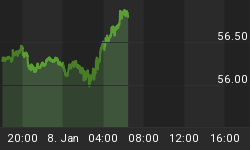As shown in Chart 1, the National Association of Realtors’ index of housing affordability fell in April to its lowest level since October 1991. In April of this year, the effective composite interest rate (i.e., a blended interest rate, including fees, on fixed-rate and adjustable-rate loans for the purchase of previously-occupied homes) was 5.92%. Back in October 1991, this mortgage interest rate was 9.02% -- 310 basis points or 52 percentage points higher.
Chart 1
Chart 2 shows that the housing affordability index hit a recent high of 142.5 in March 2004. Thus, at its April 2005 level of 121.9, it has fallen by 14.5% from its recent high. In March 2004, the effective mortgage interest rate used in calculating the affordability index stood at 5.48%. The April 2005 mortgage rate of 5.92% is 8 percent higher than it was in March 2004. Based on a linear regression relating the percentage change in the effective mortgage interest rate to the percentage change in the housing affordability index, an 8 percentage point change in the interest rate should have resulted in only a 6.1 percentage point change in the affordability index vs. the actual affordability change of 14.5%.
Chart 2
Why is the housing affordability index today with a mortgage rate of 5.92% at about the same level it was at in October 2001 when the mortgage rate was 300 basis points higher? Why has housing affordability fallen more of late than what historically would have been expected given the percentage change in the mortgage rate? Because the price of residential real estate has risen to record highs both in absolute terms as well as relative to disposable personal income. Fresh flow-of-funds data released by the Fed show (in Chart 3) that the market value of residential real estate is now at a record high of 198% of disposable personal income. Although the year-over-year percent change in the market value of residential real estate has been great in recent quarters, the changes have not been of record magnitudes. But real estate prices have been outpacing after-tax income growth. Given that housing affordability already is plunging with only minor increases in mortgage interest rates, what would happen to affordability if interest rates were to spike up a hundred basis points or so? Does Alan Greenspan want to find out in the remaining months of his tenure?
Chart 3
















